
|
|
|
|
BY: SUN STAFF
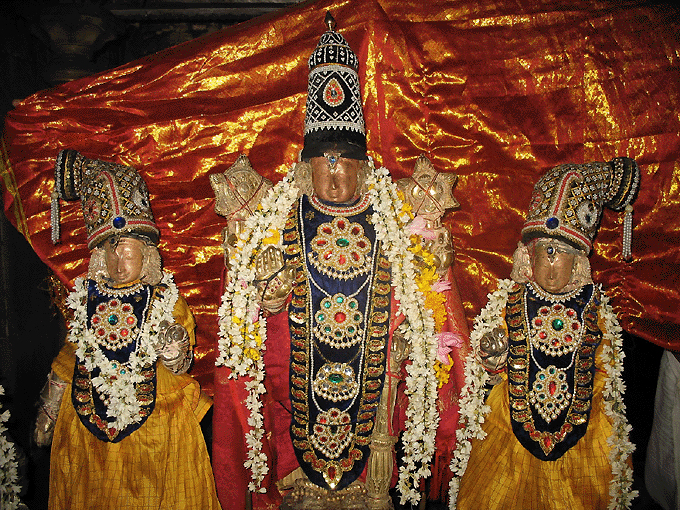
Sri Bhuvaraha Perumal, Mushman Temple Mar 05, CANADA (SUN) — A serial exploration of the holy sites visited by Lord Caitanya. Vrddhakola
One of the many famous temple towns Lord Caitanya Mahaprabhu visited during His South India preaching tour was Vrddhakola in Tamil Nadu, which is mentioned in the Summary of Sri Caitanya-caritamrta Madhya Lila 9:
Madhya lila 9 "A summary of the Ninth Chapter is given by Srila Bhaktivinoda Thakura. After leaving Vidyanagara, Sri Caitanya Mahaprabhu visited such places of pilgrimage as Gautami-ganga, Mallikarjuna, Ahovala-nrsimha, Siddhavata, Skanda-ksetra, Trimatha, Vrddhakasi, Bauddha-sthana, Tirupati, Tirumala, Pana-nrsimha, Siva-kanci, Visnu-kanci, Trikala-hasti, Vrddhakola, Siyali-bhairavi, Kaveri-tira and Kumbhakarna-kapala." Later in Madhya Lila we find additional information about this tirtha: Madhya 9.72
"At Paksi-tirtha, Lord Sri Caitanya Mahaprabhu visited the temple of Lord Siva. Then He went to the Vrddhakola place of pilgrimage. PURPORT Madhya 9.73
At Vrddhakola, Lord Sri Caitanya Mahaprabhu visited the temple of Sveta-varaha, the white boar incarnation. After offering Him respects, the Lord visited the temple of Lord Siva, wherein the deity is dressed with yellow garments. PURPORT
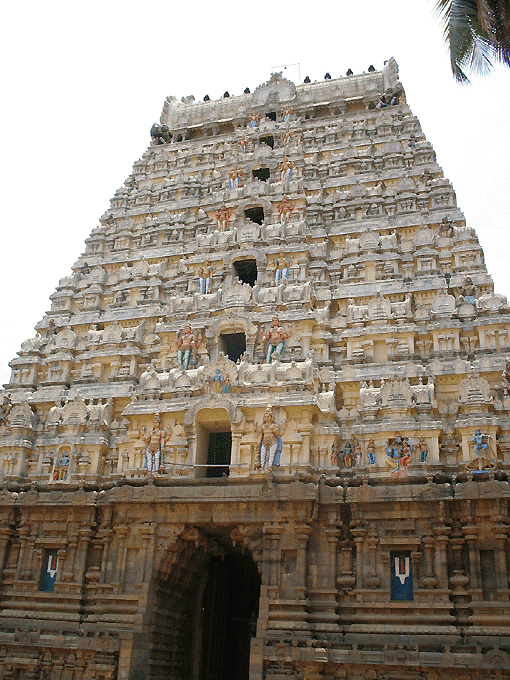
Mushnam Temple Gopuram While neither Vrddhakola or Balipitham are included on modern maps, the town of Sri Musnam (Srimushnam) is found, about 24 miles west of Chidambaram. Srimushnam is a panchayat town in the Cuddalore district of Tamil Nadu, on the central east coast of the state, about 48 kilometers inland. It is one of the eight Svayam Vyakta Ksetras of Vaishnavas, or Visnu temples with self-manifesting Deities. About 21 km northwest of Srimushnam is Vridhachalam, which is not to be confused with Vrddhakola itself. The temple that Lord Caitanya visited at Vrddhakola is still open for worship today, and Lord Sveta-varaha is worshipped there. However, the Varaha Deity that was installed in the temple at the time of Mahaprabhu's visit is no longer there, having been replaced at some point with another Varaha Deity. But interestingly enough, the ancient Sveta-varaha Deity from Vrddhakola is still being worshipped – a few hundred kilometers away in Mysore, Karnataka. Srimushnam Temple
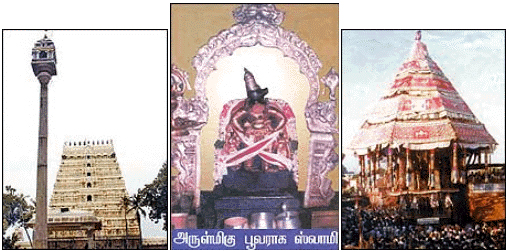
Mushnam Temple stambha, utsavmurthy and ratha car At present, the presiding Deity at Srimushnam is Lord Bhuvaraha, for whom Srimushnam is also called Varaha Kshetram. He is also known as Adhi Varaha Perumal or Yagna Varahan. Lord Bhuvaraha's consort is Ambujavalli Thayar (Bhu Devi). The black saligrama is swayambhu, or self-manifesting. The utsavamurthy (processional Deity) does not resemble a wild boar, in accordance with the desire of Varaha's celestial consort. This temple is said to be the only place where all the deities are Varaha Murtis. The Lord is in a standing posture, facing west. There are separate shrines for Lord Srinivasa, Lord Venugopala, Vishvaksena, the great sage Udayavar, Swami Desika and various other Azhwars. It is believed that Vayu (the Wind God) and Lord Brahma in his catur-mukha form perform their daily pooja here, even to this day.
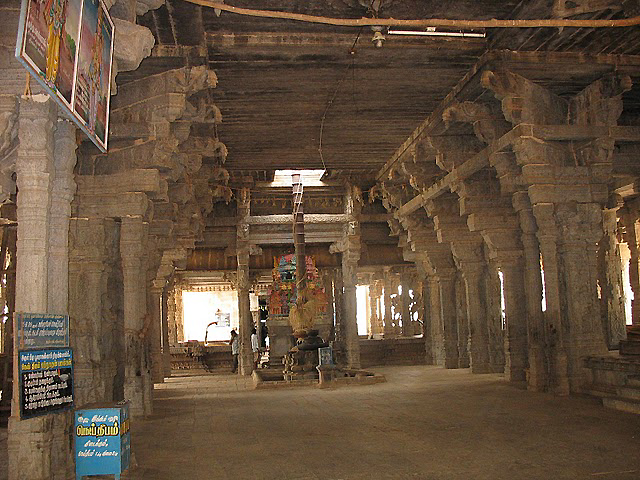
Mushnam Temple Interior The temple remains under the control of Madhva Brahmins, and two sects of the Vaishnavite Iyengar community - Vadagalai and Thengalai - take part in the daily program of worship. The Madhvas recite Gajendra Moksham and Srimushnam Puranam every day. The temple has Vamana Vimanam. The main theertham is Nithya Pushkarani, but there are many tanks. The sthalam vriksham is an Ashwatha tree. Devotees come to offer the Lord favoured sweets, being laddu made of gorai kizhangu (coco grass).
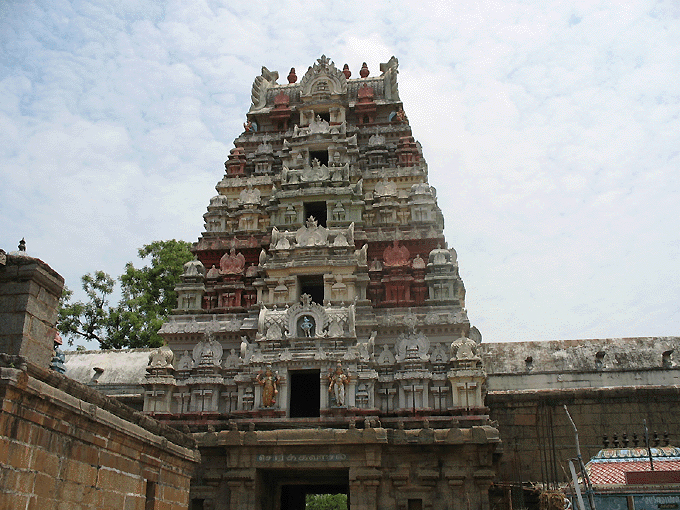
Mushnam Temple Gopuram The Nithya Pushkarani tank is known for its medicinal values and the Ashwatha tree stands nearby. Chanting Gayatri under this tree after taking bath in the holy tank is said to liberate one of all sins. Lord Varaha's temple at Srimushnam is said to have existed for aeons. In the 16th century it gained great prominence, and various inscriptions are found from that period. The Vijayanagar kings took special interest in the renovation of the temple and constructed various mandapams and shrines. They arranged for a regular program of worship and designed several important vahanas, or temple cars (thiru ther), which are still taken out on Brahmotsavam. Sveta-varaha Temple, Mysore
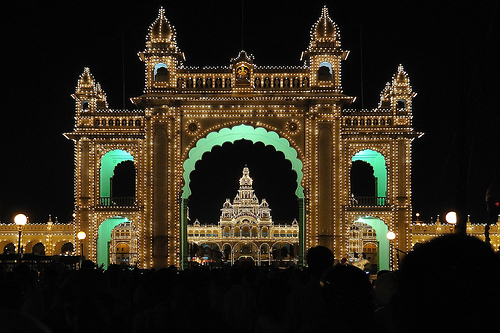
Entrance to Mysore Palace The Vijayanagar kings not only took great interest in renovating the Srimushnam temple – they also took great interest in Lord Sveta-varaha Himself. During the period 1672 to 1704, the The Mysore King Chikka Deva Raja Wodeyar procured the original stone Deity of Sveta Varahaswamy, Who was removed from His abode at Srimushnam and re-installed in a temple in Srirangapatna. This was perhaps done during the period of great temple renovations, but we have no confirmation of that.
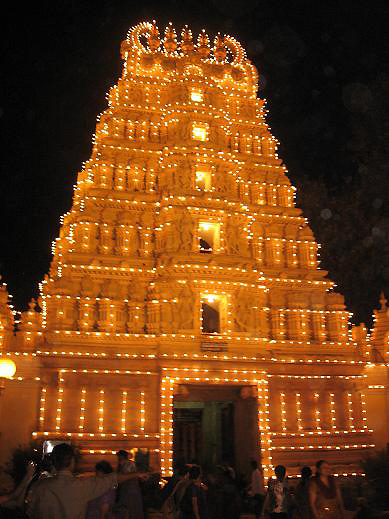
Sveta-varaha Temple, Mysore Palace Srirangapatna is approximately 400 kilometers west of Srimushnam, in Karnataka state, and is 18 km north of the City of Mysore. At that time, Srirnagapatna was the capital of Mysore State. After the defeat of Tippu Sultan, the capital was shifted back to Mysore City. The temple at Srirangapatna was eventually demolished, and in 1809 A.D., Lord Sveta-varaha was moved to the Varaha Temple in the Mysore Palace complex, where He resides to this day. Known as the Sveta Varaha Temple or the Varahaswamy Temple, this beautiful mandir built in the Hoysala style is situated at the southern gate of Mysore Palace. Lord Sveta-varaha is the same white stone Deity that Lord Caitanya visited at Srimushnam in Tamil Nadu. He carries Bhu Devi on his shoulder. Nearby in the Varaha Temple are shrines for Laksmi Devi, Ranganath, Garuda, and Hanuman. There are also a number of beautiful mural paintings in the temple featuring Krsna lila and scenes from Ramayana and the Bhagavata.
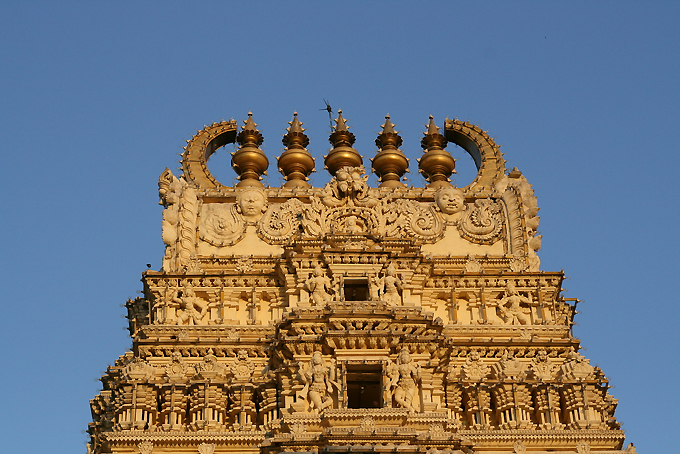
Sveta-varaha Temple Gopuram It is claimed that Dewan Purnaiya had this temple built with materials of a Hoysala building in Shimoga district. Temple epigraphs include two inscribed images of Srivaishnava acaryas Desikar and Jiyar. Desikar was a well known Vaisnava teacher from the 13th-14th century. The Varaha Temple is enclosed within high walls, and is one of twelve temples in the palace complex. Some of the temples are very ancient, including the Balkrishna Temple, Sveta Varaha Temple, and Laksmi Ramana Temple. Mysore Palace itself is one of India's most well known architectural sights. It is fully illuminated at night, to stunning effect.
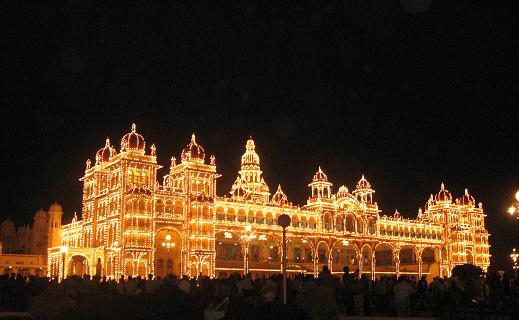
Mysore Palace
| |